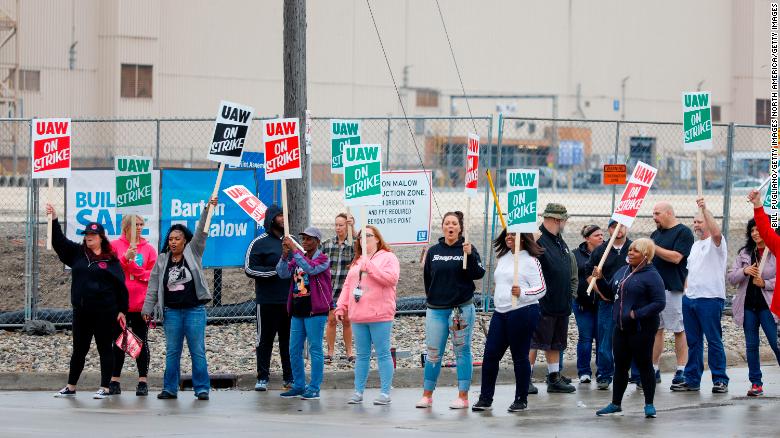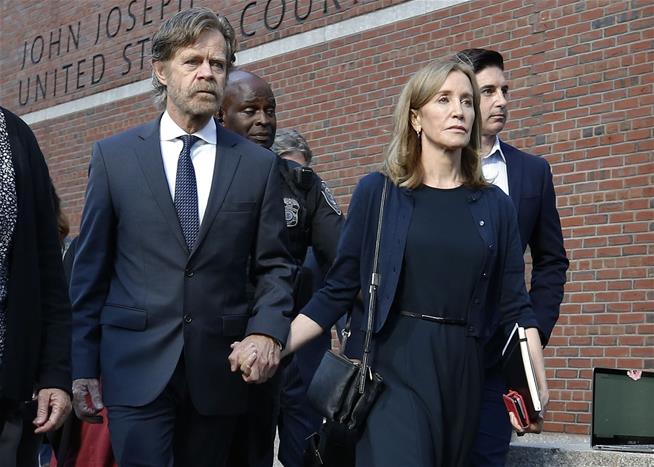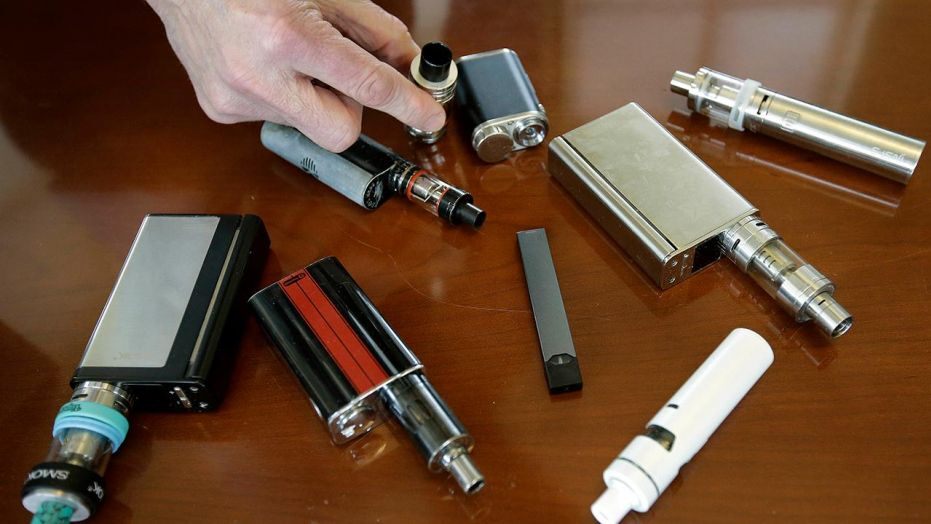
MGM Resorts International has agreed to an $800 million settlement with more than 4,000 survivors of the 2017 massacre outside the Mandalay Bay casino. The settlement was announced after survivors joined friends and families of those killed at a commemoration ceremony marking the second anniversary of the massacre. An independent claims administrator will be appointed by a court to distribute money from a settlement fund. The payout process is expected to be completed by late 2020, lawyers said.
It was October 1, 2017, when a lone gunman named Stephen Paddock used semiautomatic rifles altered with bump stocks to open fire from the resort’s 32nd floor on a country music festival below, killing 58 people and wounding 851 others. Paddock, a reclusive 64-year-old gambler, sprayed bullets on a crowd of 22,000 concertgoers from the 32nd floor of the Mandalay Bay Resort and Casino, which is owned and operated by MGM Resorts. He fired for between 10 to 15 minutes at the country music festival.
It remains the worst mass shooting in modern U.S. history. Lawyers representing survivors and victims’ wanted MGM held liable for negligence because the shooter was able to enter the hotel with luggage that held an arsenal of high-powered, assault-style weapons and thousands of rounds of ammunition. Paddock was found dead in his hotel room from a self-inflicted gunshot wound. Federal investigators have still not been able to identify a motive for the shooting.
Police found 23 guns inside his hotel suite and discovered that he had brought more than 10 suitcases to the room over several days, authorities said. Lawsuits filed since the shooting questioned how and why the hotel did not know he was hoarding high-powered weapons and ammunition in his hotel room in the days leading up to the attack. Attorney Jim Frantz, who represents nearly 200 survivors and the families of four victims, said the settlement “should be a message to all the other corporations and businesses around the country-that they need to step up their security.”
MGM Resorts International and attorneys for about 4,440 plaintiffs, said the final amount of money awarded will depend on the number of plaintiffs who choose to take part in the settlement. “While nothing will be able to bring back the lives lost or the undo the horrors so many suffered on this day, this settlement will provide fair compensation for thousands of victims and their families,” Robert Eglet, one of the lead lawyers for the plaintiffs, told reporters. Eglet called the settlement a “milestone in the recovery process for the victims of the horrifying events” of Oct. 1, 2017. Eglet and lawyers from two California firms represent about 2,500 plaintiffs.
In July 2018, MGM spurred outrage when it aggressively tried to avoid liability by filing federal lawsuits against more than 1,000 victims in a legal maneuver aimed at avoiding liability. In its civil actions, MGM claimed it did not have to pay damages to shooting victims because the company was protected by 2002 legislation, the Support Anti-Terrorism by Fostering Effective Technologies, or Safety Act. It protects corporations in the event of mass attacks committed on U.S. soil, provided services certified by the Department of Homeland Security were deployed. The company cited a federal law passed after the Sept. 11, 2001, attacks that encouraged companies to deploy anti-terrorism security technology without fear of being held responsible for damages in the event of a terrorist attack.
MGM Resorts Chairman and CEO Jim Murren now says that “prolonged litigation around these matters is in no one’s best interest. It is our sincere hope that this agreement means that scenario will be avoided.” The deal is not an admission of any wrongdoing by MGM, Murren said in the statement
Read more

General Motors has told the UAW that it will continue to pay for health coverage for striking workers. GM told the union after it went on strike Sept. 16 at company sites nationwide that it was kicking health care costs to the union, a move that UAW leaders said blindsided them, even though they had anticipated picking up those costs at some point through the strike fund. GM stated they have chosen to work with their providers to keep all benefits fully in place for striking hourly employees, so they have no disruption to their medical care, including vision, prescription and dental coverage.
The strike is the UAW’s first since the Great Recession and GM’s federally induced bankruptcy in 2009. Experts say as the strike continues toward the end of its second week, it has left a lasting economic impact. Strike pay is $250 per week, but it won’t be distributed until the 15th day of picketing. The starting wage for temporary production workers at GM is $15.78 per hour, which is about $630 per 40-hour week. Top-paid production employees, however, earn $30.46 per hour, or about $1,218 per week.
The UAW says that temporary workers are union members doing the same work as permanent employees, but they get half the pay and far fewer benefits. The union wants those workers to get a path to being permanent and get pay and benefits that more closely match their permanent counterparts, even when they’re temporary. GM counters that employing temporary workers is good for permanent employees because they enable the full-time staff to take time off. Hiring temps also gives the company flexibility to scale up production for new models and combat employee absenteeism
The UAW is also fighting for the retention of a health insurance plan in which workers pay about 4% of the costs, an improved pension and assurances that GM — the maker of Buick, Cadillac, GMC and Chevrolet — will not close four plants in Maryland, Ohio and Michigan.
The strike has affected GM facilities in Ohio and Ontario not represented by the UAW. All told more than 3,200 GM workers represented by other unions have been laid off. On Monday, the automaker notified 525 employees at its DMax Ltd. engine plant in Moraine, Ohio, that they temporarily were laid off. GM suppliers, such as Magna International Inc. and Nexteer Automotive, also said they temporarily have had to lay off employees during the strike.
Analysts agree that the cost of the strike is mounting daily for both GM and striking workers, as well as for the broader community. Anderson Economic Group, an East Lansing-based consultant, said in a new analysis Thursday that GM probably has lost profits of $113 million so far, and is now losing money at the rate of $25 million a day. As talks continue toward a UAW-GM contract, negotiations have entered a new stage and moved to the main table. In recent days, talks have been confined to smaller committees as the two sides struggled to hammer out details.
Union leaders have argued that GM workers deserved a bigger slice of the company’s profits, which they say have totaled $35 billion in North America over the last three years. Union members are calling for fair wages, saying for every $1 a GM employee made, CEO Mary Barra made $281. As the strike enters its 3rd week, the national impact will continue until an agreement is reached.
Read more

U.S. District Judge Indira Talwani sentenced actress Felicity Huffman to two weeks in prison for paying $15,000 to get her daughter into college by having someone correct her answers on the SATs. Huffman also received a $30,000 fine and 250 hours of community service. She had pleaded guilty to conspiracy to commit mail fraud and honest services mail fraud. Her lawyers asked for no jail time, one year of probation, 250 hours of community service and a $20,000 fine. Her sentence likely means other parents who’ve pleaded guilty in the nation’s college admissions scandal will spend time behind bars. It could also mean that others who made significantly larger payments will end up with more lenient prison terms than prosecutors say are fair.
During Huffman’s sentence she told the courtroom she was deeply ashamed. Judge Indira Talwani said, “Ultimately, you knew it was fraud, it was not an impulsive act. Trying to be a good mother doesn’t excuse this.” Talwani added that the sentence she handed down was “the right sentence here,” but also told Huffman “You can rebuild your life after this,” the judge said. “You’ve paid your dues.” Huffman will report to prison in six weeks, on October 25. Where she’ll serve her sentence has not been announced and will ultimately be decided by the Bureau of Prisons.
Fifty-two people have been charged as part of the college admissions bribery scandal known as “Varsity Blues.” Of the 52 people charged in the scandal, 35 are parents. Fifteen, including Huffman, have pleaded guilty in deals with prosecutors, while 19, including actress Lori Loughlin, have pleaded not guilty and are preparing for trial. Rick Singer, the mastermind of the nationwide college admissions scandal, was paid to have cheat on their children’s SAT or ACT while others paid substantially more to get their children falsely tagged as athletic recruits as a way into prestigious schools. Huffman is the first parent to be sentenced and prosecutors sought one month prison time for Huffman. Prosecutors are pushing for longer sentences for other defendants — more than three years in some cases.
The next parent to be sentenced in Boston federal court is Devin Sloane, CEO of Los Angeles-based waterTALENT. He pleaded guilty to paying $250,000 to Singer’s sham nonprofit to falsely designate his son as a water polo player to gain acceptance into the University of Southern California. Prosecutors are seeking one year in prison for Sloane. Sloane’s hearing is scheduling for September 24th. Two days later, Stephen Semprevivo, a former executive at Cydcor, also based in Los Angeles, will be sentenced. He pleaded guilty to paying $400,000 to Singer to get his son admitted into Georgetown University as a fake tennis recruit. Prosecutors have asked that Semprevio receive 15 months in prison.
Both upcoming cases will reveal whether the judge treats the recruiting scheme the same as the testing scam, and whether she comes down harder on parents who paid more to Singer. Longer sentences could be in store for parents who participated in the recruitment scheme because it had a more “direct effect” on the admissions process than test tampering. Such parents, including Loughlin, accused of paying $500,000 to Singer, have argued they made “legitimate donations” to Singer’s nonprofit, which they said had a history of donating to colleges.
Prosecutors have argued parents who paid more money to Singer should receive longer prison terms. An order by the judge released hours before Huffman’s sentencing could cap sentences at six months for parents regardless of their how much they paid. Judge Talwani ruled against the government’s request to sentence defendants under the federal commercial bribery statute, which allows more severe sentences depending on the amount of money paid. Instead, all sentences will be based on fraud statute guidelines, which recommend six months or less in prison for the offense.
Read more

Five deaths in the US have been linked to vaping as health officials continue to grapple with the dangers of e-cigarette use and the exact cause of the deaths. All five died after developing a severe lung illness that is believed to be linked to vaping. The exact cause of the deaths and the dangers of vaping still remain unclear but are being investigated on both the federal and state level.
More than 450 possible cases of respiratory illnesses have been reported in 33 states after use of e-cigarette products, according to the Centers for Disease Control and Prevention. The average age of those with the illness is 19, which is not surprising considering of the almost 10 million vapers in the US, nearly half of those are under 35, with 18-24-year-olds the most regular users.
Those who have suffered from the lung illness reported experiencing coughing, chest pain or shortness of breath before their health deteriorated to the point of respiratory failure and they needed to be hospitalized, according to the Centers for Disease Control and Prevention. Respiratory failure is where your body either can’t break down oxygen, produce carbon dioxide, or both. The result is that your lungs stop working and breathing becomes difficult. Other reported symptoms include nausea, vomiting, diarrhea, fatigue, fever and weight loss. Many victims have ended up with acute respiratory distress syndrome, a life-threatening condition in which fluid builds up in the lungs and prevents the oxygen people’s bodies need to function from circulating in the bloodstream.
Those affected used a number of different devices from vaporizers to smaller e-cigarettes and a variety of different brands of liquids and cartridges. Health officials recently said many cases involved products that contained THC, the mind-altering substance in marijuana. The FDA has now collected over 120 samples to test for different chemicals, including nicotine, cannabinoids, additives and pesticides.
They also recently identified a common contaminant in some of the cannabis products used by patients across the country — an oil derived from vitamin E. It remains unclear whether this is the cause or one of the causes of the illnesses. The Centers for Disease Control and Prevention issued a statement that advised against using electronic cigarettes while it investigates the issue. The agency also said people should stop buying vaporizers, cartridges and liquids off the street or modifying vaping products bought legally.
New York Health officials have focusing their investigation on Vitamin E acetate after they found high levels of it in nearly all of the cannabis-containing vapes tested. At least one vape containing both cannabis and vitamin E has been linked to every patient who submitted products for testing, the New York health department said. Vitamin E isn’t known to be harmful if ingested as a vitamin supplement, but it could be dangerous if inhaled because of its “oil-like” properties. It has not been approved as an additive for New York’s medical marijuana program.
Federal health officials are warning that vitamin E is likely only one piece of the puzzle. The CDC is running its own tests on more than 100 samples for vitamin E, pesticides, opioids, poisons and other toxins. “No one substance or compound, including vitamin E acetate, has been identified in all the samples tested,” Zeller said. “The samples we’re continuing to evaluate show a mix of results.”
Read more
 A patient in Illinois is believed to be the first death linked to vaping. Health officials said the patient died after contracting a severe respiratory illness, but did not give details about what the patient was vaping or which device was used. They did not provide details about the patient’s identity, saying only that the person was an adult who had vaped recently and then succumbed to a severe respiratory illness.
A patient in Illinois is believed to be the first death linked to vaping. Health officials said the patient died after contracting a severe respiratory illness, but did not give details about what the patient was vaping or which device was used. They did not provide details about the patient’s identity, saying only that the person was an adult who had vaped recently and then succumbed to a severe respiratory illness.
This comes as the Centers for Disease Control and Prevention has identified nearly 200 possible cases of lung disease linked to vaping in at least 22 states, including 22 cases in Illinois. The Illinois patients range in age from 17 to 38. Illinois state officials are working with local health departments to investigate another 12 individuals. Officials said earlier this week that many patients, most of whom were adolescents or young adults, had described difficulty breathing, chest pain, vomiting and fatigue. The most seriously ill patients have had extensive lung damage that required treatment with oxygen and days on a ventilator. Some are expected to have permanent lung damage.
Many patients have acknowledged vaping of tetrahydrocannabinol, or (T.H.C.), the high-inducing chemical in marijuana, according to statements from federal and state health agencies. Officials still don’t know whether the ailments have been caused by marijuana-type products, e-cigarettes, or some type of street concoction that was vaped, or whether a contaminant or defective device may have been involved.
The F.D.A. does not regulate what ingredients are used in vaping devices. The e-cigarette market has broadened to counterfeiters and a range of devices that can be packed with different substances, including marijuana, but also various flavors and concoctions that may be mixed inexpertly. Some speculate that people are emptying out commercial nicotine pods and filling them up with a combination of T.H.C. oil and other chemicals. Cannabis liquids and oils have become more widely available online and in many stores. The ingredients may not be disclosed at all so unsuspecting consumers may be exposed to a cocktail of hazardous chemicals.
State health departments are handling most investigations into the respiratory illnesses. So far, public health officials have declined to say if they are seeing a pattern that would make clear whether the problematic products are made by mass-market companies or counterfeiters, or whether the inhalants involved are standard to many vaping products or made or mixed by consumers themselves. Even though cases appear similar, it is not clear whether all these cases have a common cause or whether they are different diseases with similar symptoms.
Dozens of young people with an unidentified lung illness have been hospitalized around the country in recent weeks. It’s unclear if the condition is linked to the vaping devices or what the patients were smoking before they became sick. A recent study says that e-cigarettes impact people’s blood vessels after a single use. Officials said they don’t know why a surge of illnesses is surfacing now since various forms of the battery-powered e-cigarette devices have existed for more than a decade. E-cigarettes have grown in popularity over the past decade despite little research on their long-term effects. Millions of Americans use e-cigarettes, with the greatest use among young adults. Lat year, more than 3.6 million U.S. middle and high school students said they had used e-cigarettes in the past 30 days, according to the CDC.
Read more

Oklahoma Judge Thad Balkman has found that Johnson & Johnson helped fuel the state’s opioid crisis, and ordered the pharma giant to pay over half a billion dollars — $572 million. It’s the first major ruling against a drug company as part of the opioid epidemic, which has led to hundreds of thousands of overdose deaths around the country. The decision is the first to hold a drugmaker culpable for the fallout of the liberal opioid dispensing that began in the late 1990s which led to a nationwide epidemic of overdose deaths and addiction.
More than 400,000 people in the US have died of overdoses from painkillers, heroin and illegal fentanyl since 1999. In Oklahoma, more than 6,000 people have died of painkiller overdoses since 2000, the state charged in court papers, as the number of opioid prescriptions dispensed by pharmacies reached 479 every hour in 2017. Johnson & Johnson’s products — a prescription opioid pill and a fentanyl skin patch sold by its subsidiary, Janssen Pharmaceuticals, were a small part of the painkillers consumed in Oklahoma. Two other companies it owned had grown, processed and supplied 60 percent of the ingredients in painkillers sold by most drug companies in the US.
The decision has been hailed as a victory but the damages are much lower than the $17 billion Oklahoma had sought in the case. Balkman did not give the state everything it sought, the state attorneys asked for $17.5 billion over 30 years for treatment, emergency care, law enforcement, social services and other addiction-related needs. Judge Balkman concluded it would cost $572 million to address the crisis in the first year based on the state’s plan. He said the state did not provide “sufficient evidence” of the time and money needed to respond after that.
There are about 2,000 lawsuits in 40 other states against opioid manufacturers and distributors that are pending around the country. A massive federal lawsuit brought by almost 2,000 cities, counties and Native American tribes is scheduled to begin in October. The ruling in the first state case to go to trial could influence both sides’ strategies in the months and years to come.
Moments after the judge ruled, Johnson & Johnson, which has denied wrongdoing, said it would appeal. Company attorney Sabrina Strong said at a news conference, “We are disappointed and disagree with the judge’s decision. We believe it is flawed. We have sympathy for those who suffer from opioid use disorder but Johnson & Johnson did not cause the opioid abuse crisis here in Oklahoma or anywhere in this country.”
Oklahoma settled in March with Purdue Pharma, manufacturer of OxyContin, accepting $270 million from the company and its owners, the Sackler family, who were not named as defendants in the lawsuit. Most of that will go to a treatment and research center at Oklahoma State University, although the federal government is seeking a portion of the money. In May, two days before the trial began, the state settled with Teva Pharmaceuticals, an Israeli-based manufacturer of generic drugs, for $85 million. The Sackler family has also offered to settle the more than 2,000 lawsuits against them for their role in the opioid crisis for $10 billion to $12 billion which includes $3 billion from the Sackler family fortune. The deal was reportedly discussed last week by Purdue’s lawyers and includes a plan for Purdue to declare Chapter 11 bankruptcy before restructuring into a for-profit “public benefit trust” that would allegedly serve the many plaintiffs suing the company. The Sackler family would also relinquish ownership of Purdue under the deal.
Read more

Newark, New Jersey’s water crisis is growing worse as authorities temporarily halted their distribution of bottled water to families whose tap water is contaminated with lead. The Environmental Protection Agency told city officials to distribute bottled water “as soon as possible,” after it determined that water filters were ineffective at safely filtering lead from the water supply of thousands of homes. State and local officials began offering free bottled water to 15,000 Newark households, and hundreds of people queued in long lines in the summer heat for their allotment. Officials stopped handing out the water after discovering many of the bottles had exceeded their best-by date.
The levels of lead in Newark, New Jersey’s drinking water are some of the highest recently recorded by a large water system in the United States. City and state officials have been violating the Safe Drinking Water Act in several ways, such as failing to treat its water to prevent lead from flaking off from pipes into residents’ drinking water and neglecting to notify people about the elevated levels and the health risks. For years, the city has had the greatest number of lead-poisoned children in New Jersey. This likely stems from a variety of exposures to lead, including from contaminated tap water and other sources.
One way lead particles get into water is through corrosion in pipes and it’s believed to be the cause in Newark. The metal in lead service plumbing lines starts to tear away and mix with the water passing through. This is often apparent in older pipes; in some affected Newark neighborhoods, pipes are over 100 years old. Citywide tests conducted in June 2017 showed that more than 10% of homes across Newark had twice the amount of lead that is considered safe according to federal law.
The Natural Resources Defense Council (NRDC), an environmental and health advocacy group, sent a letter to officials in Newark later that year saying that they had failed to address the lead contamination issue. After the city failed two more citywide lead tests in December 2017 and June 2018, the city announced in October that year that it would provide over 40,000 water filters to residents. After the city then failed a fourth consecutive lead test in December 2018, Newark Mayor Ras Baraka wrote an open letter to the President asking for federal help to fix the water system in the city.
The city failed another lead test in June 2019 and in August, after testing three homes that were using water filters provided by the city, officials found that two of those homes still had elevated levels of lead in them. After the results of their water filter tests, city officials have begun handing out packages of bottled water to Newark residents, in accordance with guidance from the Environmental Protection Agency (EPA).
There is no safe level of lead exposure and pregnant women and children are most at risk. Even low lead levels are associated with serious, irreversible damage to developing brains and nervous systems. Lead exposure is also linked to fertility issues, cardiovascular and kidney problems, cognitive dysfunction, and elevated blood pressure in otherwise healthy adults.
Read more

Thirteen Hours after El Paso’s horrific attack, in the early hours of Sunday morning, a gunman opened fire with a high-caliber rifle outside a bar in a popular downtown entertainment district in Dayton, Ohio, killing nine people and wounding 27 others. The attack took less than a minute and police killed the suspect at the scene. The shooter was identified as 24-year-old Connor Betts. The victims were mostly in their twenties and thirties, and one of the victims, Megan Betts, was the gunman’s sister.
According to the timeline of the shooting released by police, Betts, his sister, Megan Betts, and a friend arrived together to the Oregon District of Dayton at 11:04 p.m. Saturday and went to a bar named Blind Bob’s. Betts split off from the two and went to another bar called Ned Peppers at 12:14 a.m., and after 30 minutes he went back to the vehicle in a parking lot to gather the weapon and change clothes, Biehl said. With a weapon in his backpack, Betts walked toward an alley and began firing into Blind Bob’s at 1:04 a.m., authorities said. Based on a timeline pieced together from security cameras, police engaged with him after less than 20 seconds and Betts was killed 32 seconds after his first shot.
Police say Betts knew that his sister and friend were still in the area when he opened fire because they had been texting and talked in a phone call. Investigators are still divided on whether he intentionally sought out and killed his sister and injured the friend. Authorities said they do not know his immediate motivation — why this location at this time and these victims but they have uncovered a violent mindset. Police say Bates has a history of threatening women, and former classmates say he had a “kill list” and a “rape list” in high school. Investigators have gathered evidence showing he had an obsession with violence and had expressed a desire to commit a mass shooting.
Comments from police, memories from former classmates and posts on his apparent Twitter account show he had a deep interest in violence — as well as the easy access to high-powered guns that is the common thread of all American mass shooters. Two former high-school classmates stated that the gunman was suspended from Bellbrook High School after he made lists of other students he wanted to kill and rape. The “hit list” was discovered in early 2012 and resulted in a police investigation. The suspect’s high-school girlfriend stated that at the time they dated, he had complained of visual and auditory hallucinations, and psychosis, and was afraid of developing schizophrenia.
Authorities say the rifle used in the shooting was ordered online from Texas and transferred to the suspect at a local firearms dealer. Police also found a shotgun, acquired from a separate local firearms dealer, in the shooter’s nearby vehicle. During a search of the gunmen’s home, police found writings that showed interest in killing people and a preliminary assessment did not indicate he had a racial or political motive.
The gunman’s friend, Ethan Kollie, was arrested on federal firearms charges for allegedly possessing a firearm while using or addicted to a controlled substance and falsely filling out a firearms application form. Authorities also accused Kollie of providing Betts with the body armor and a 100-round double-drum magazine used in the Dayton attack. In an interview with federal agents, Kollie said he had done hard drugs, marijuana and LSD with Betts several times a week between 2014 and 2015, the affidavit says. Prosecutors emphasized that Kollie did not intentionally help plan the shootings.
Read more

Police in Louisiana are releasing new details about the man accused of killing popular Baton Rouge civil rights activist Sadie Roberts-Joseph. Ronn Jermaine Bell, 38, was arrested on one charge of first degree murder. According to police, Bell was her tenant and owed her about $1,200 in rent. Both circumstantial and physical evidence led to his arrest after her body was found in the trunk of her car outside a vacant home about 3 miles away from her home last week. According to the arrest report, Bell admitted to being in the area where her car was abandoned, surveillance cameras place him in the area and his DNA was found on her body.
The death of Roberts-Joseph shocked and saddened the community and sparked a swift and coordinated investigation. Baton Rouge police credited both the community and detectives in helping find Roberts-Joseph’s accused killer. Police say Bell suffocated the 75-year-old on Friday and then placed her body in the trunk of her own car. According to the East Baton Rouge district attorney, Bell was previously arrested after being accused of raping an 8-year-old girl in 2004. He pleaded guilty to sexual battery and served seven years in prison. He was not on probation or parole but was under indefinite supervision as a sex offender. Officials say they do not believe Roberts-Joseph knew of Bell’s sex offender status.
Bell was already in jail when he was identified as a suspect in Roberts-Joseph’s murder, for violating sex offender registration requirements. Bell was booked into jail Monday for not paying the $60 annual registration fee required of all sex offenders. He was then rebooked on Tuesday on the murder charges. Bell told investigators that the activist had allowed him to stay in the home he was renting as long as he paid her something. However, in the affidavit, investigators noted that Roberts-Joseph’s own notes suggested that she ” intended to contact the defendant on the day of her murder … in regards to the back payments.”
Roberts-Joseph was considered a local icon in Baton Rouge, where she founded the Odell S. Williams Now and Then African American Museum and hosted the annual celebration of Juneteenth, which she fought to have recognized as a state and national holiday. She also started the Community Against Drugs and Violence (CADAV), a nonprofit to empower people to combat drugs and street violence in order to create a safer environment for children.
Hundreds gathered in the Louisiana heat at the African American history museum Sadie Roberts-Joseph founded nearly two decades ago to mourn the loss. Baton Rouge Mayor-President Sharon Weston Broome said “Having known her for decades, she was one of the standout matriarchs of Baton Rouge. She was a part of the fabric of Baton Rouge and we will make her legacy a priority in Baton Rouge because of what she gave to so many here.”
Roberts-Joseph’s daughter, Angela Machen, said that although this experience has been heartbreaking and “heinous,” there has been solace in seeing the community unite to solve her mother’s killing and honor who she was as a person. “All my mother ever wanted was for this community to come together,” she said. “It’s ironic that this happened in death. What she wanted to happen in life came to fruition in death. We will see to it that her legacy continues.”
Read more

A seven-member military jury panel has acquitted Navy SEAL Chief Edward Gallagher, 40, on charges of murder, witness intimidation, and assault. The charges stemmed from a 2017 deployment in Iraq during which fellow SEALs said Gallagher stabbed a captive teenage ISIS fighter in the neck. The ISIS fighter, whom Gallagher was treating for air-strike injuries, later died. Three SEALs also said they saw Gallagher shoot two civilians. The jurors found Gallagher guilty of one count related to pictures he took next to the corpse of the Iraqi fighter.
After the verdict was read, Gallagher, his wife and his defense team stood up and began hugging. Gallagher told reporters after the verdict was read: “I’m happy and I’m thankful. I thank God, and my legal team and my wife.” He still faces the impending sentencing for wrongful posing for photos with a human casualty but his according to his defense attorney Tim Parlatore “We have a sentencing to do, but the maximum sentence on what they’re about to sentence him on is much less than the time that they’ve already had him in the brig, so he is going home.” The same jury that tried Gallagher sentenced him on July 3, 2019, for posing with the corpse. The jury gave Gallagher, who served the maximum prison time for this charge, a demotion from Chief Petty Officer (E-7) to Petty Officer First Class (E-6); a lighter sentence than other potential punishments, such as an other than honorable discharge (OTH).
The jury of five Marines and two sailors — one of whom is a SEAL — had to decide if the boy was stabbed to death, or died from wounds sustained during an airstrike with Gallagher being falsely accused by disgruntled subordinates. Seven SEALs testified that Gallagher abruptly stabbed the teen prisoner on May 3, 2017, just after he and other medics treated the boy. Two of them said they witnessed Gallagher, a 19-year-veteran, stab the teen. But one of them, in an admission that stunned the courtroom, Special Operator Corey Scott, who is also a medic, said he was the person who killed the boy when he plugged his breathing tube with his thumb in an act of mercy.
An Iraqi general testified that Gallagher did not stab the boy, and Marine Staff Sgt. Giorgio Kirylo said that he didn’t see any stab wounds on the young ISIS fighter when he moved the corpse to take a “cool guy trophy” photo with it. Navy Cmdr. Jeff Pietrzyk told the jury that while the detained Islamic fighter was not a sympathetic figure, he was under the control of the U.S. military, which meant he was no longer a lawful target. Pietrzyk also said that text messages sent by Gallagher prove his guilt. One message said: “I’ve got a cool story for you when I get back. I’ve got my knife skills on.” Another text stated: “Good story behind this. Got him with my hunting knife.” Pietrzyk then showed a photo of Gallagher holding up the dead prisoner’s head by the hair. Gallagher’s lawyers said the text was just an example of dark combat humor.
SEAL sniper Dalton Tolbert testified that he does not remember who started a group chat called “The Sewing Circle,” but the purpose of it was to connect with others who were disturbed by what they saw while deployed with Gallagher, and decide how to handle it. “I shot more warning shots to save civilians from Eddie than I ever did at ISIS. I see an issue with that,” Tolbert wrote in one of the texts. One of the members of Gallagher’s unit — Alpha Platoon, SEAL Team 7 testified that Gallagher confessed that he killed four women and two other SEAL petty officers told investigators Gallagher bragged about slaying “10-20 people a day or 150-200 people on deployment,” court documents state.
Court records state that one of the SEALS saw Gallagher fire into a crowd of what appeared to be noncombatants multiple times and another states that Gallagher claimed “he averaged three kills a day over 80 days.” Many of the SEALs that testified said that Gallagher attempted to cover up these alleged crimes by threatening to murder witnesses and embarking on a campaign to identify other whistleblowers, get them blacklisted in the special warfare community and ruin their careers. But with no body or autopsy evidence, the panel only had testimony of witnesses to review before deciding the fate of a man with a 19 year military career. Gallagher’s lawyers ultimately tried to prove that some SEALs wanted to derail Gallagher’s advancement to senior chief. Others were angry that he had been recommended for a post-tour combat valor award — the Silver Star — an honor they thought he didn’t deserve.
Read more





 A patient in Illinois is believed to be the first death linked to vaping. Health officials said the patient died after contracting a severe respiratory illness, but did not give details about what the patient was vaping or which device was used. They did not provide details about the patient’s identity, saying only that the person was an adult who had vaped recently and then succumbed to a severe respiratory illness.
A patient in Illinois is believed to be the first death linked to vaping. Health officials said the patient died after contracting a severe respiratory illness, but did not give details about what the patient was vaping or which device was used. They did not provide details about the patient’s identity, saying only that the person was an adult who had vaped recently and then succumbed to a severe respiratory illness.





